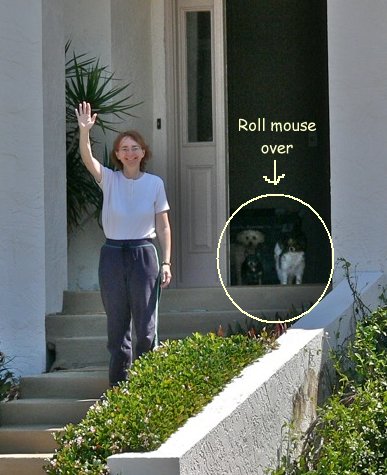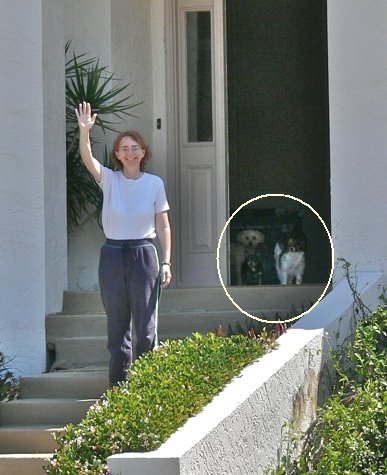Teach Your Dog 100 English Words (FREE BOOK)
By Michele Welton, Dog Trainer, Breed Selection Consultant, Author of 15 Dog Books
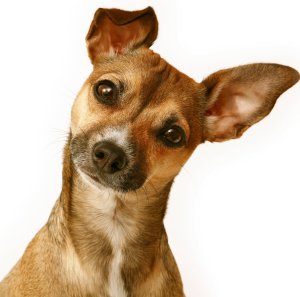
"My name is Tippy (guess why?) and now I'm a smart, well-behaved dog because my owner read this web page!"
Tell me if I'm right.... when you got your dog, you were hoping that he would be the kind of dog who listens to you. Who understands what you say. Who does what you say.
We all want a dog like that.
But often it doesn't work out that way.
Take Taz, for example. Some years ago in Southern California, I got a phone call from a dog owner who wanted me to help solve some behavioral issues with her dog, a little Schipperke. "How soon can you come?" she asked, with a hint of desperation.
I came the next day. As we were sitting at the dining table, her husband came in with the dog.
Actually, that's an understatement.
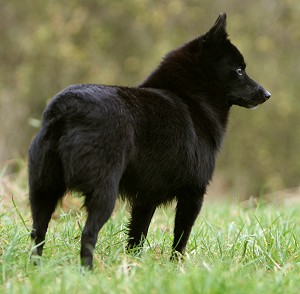
Taz was a Schipperke, about 12 inches high and 12 pounds. Bold, inquisitive, independent... training Taz was going to be a challenge!
What happened was.... a small black bundle streaked into the dining room, pursued by a gentleman running in a bent-over position with his arms outstretched.
Hop Hop! went the dog as he bounded onto the dining room chair and then on top of the table. Dashing past my face, he paused at the fruit bowl to snatch up a grape. Then he launched himself off the table, sailing through the air with all four legs outstretched like a black flying squirrel.
He landed effortlessly on the back of the sofa. Hop! Hop! to the floor and a mad dash across the room, whirling in circles to elude capture from the grabbing husband.
And then (I still see this image sometimes in my dreams), the little doggie climbed the drapes.... macrame drapes.... and walked across the rod like a nimble cat. Still clutching his filched grape.
That was Taz. Short for Tasmanian Devil. In my 35 years of experience, no dog had worse behavior problems than Taz.
I know YOUR dog isn't like Taz. And yet....
Do any of these behaviors look familiar?

Housebreaking "accidents"

Barks too much

Won't let go of things

Jumps on people

Gets into trash

Demands attention
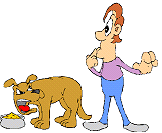
Growls, guards food
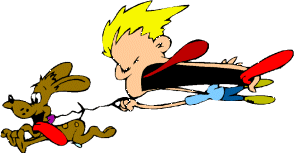
Pulls on leash!
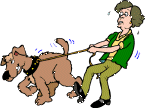
Aggressive on leash

Struggles, resists

Steals food

Chases the cat

Mischievous, gets into trouble

NOW what???
If your dog does any of the things above, don't feel bad. You're not alone. For 40 years, dog owners have been calling or emailing me with these same problems. And many hundreds of owners have hired me to HELP them with these problems.
 In my experience, 99 out of 100 owners say their dog's behavior "could be better".
In my experience, 99 out of 100 owners say their dog's behavior "could be better".
How do you get your dog's behavior to be better?
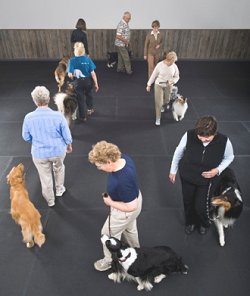
Obedience classes are too hectic and the exercises your dog learns are not very useful.
NOT by obedience training! That may surprise you, coming from an obedience instructor. But it's true.
When your dog goes to obedience class, he learns to sit, stay, lie down, come.... on-leash. Performing a few boring exercises on-leash doesn't stop behavior problems. Lots of dogs "ace" an obedience class. But as soon as they get home and the leash comes off, they go right back to misbehaving.
In fact, I've competed at obedience trials where the top-winning dog was a holy terror as soon as he exited the ring.
When your dog barks too much, pees in the house, or jumps all over people, a handsome obedience ribbon or trophy doesn't help much.
No, obedience training won't get your dog to listen to you. But Respect Training will. Respect Training is MORE than obedience training.
Respect Training teaches your dog to:
- Listen to you.
- Pay attention to you.
- Follow your directions.
- Let you do ANYTHING with him.
- Stop doing whatever he's doing when you say, "No."
When your dog respects you, he looks up to you. He will do anything for you, and he trusts you to do anything with him. A respect-based relationship is what makes a dog a terrific companion.
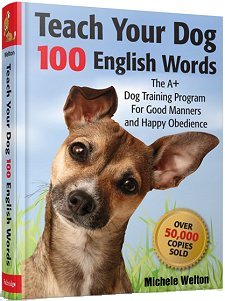
NEW 2nd Edition! Completely Revised! Entirely FREE!
That's why I wrote Teach Your Dog 100 English Words.... to show you how to raise a well-behaved dog by teaching him useful, practical words – and you must teach them in a safe and specific way that instills in him a respectful attitude.
Best of all, you can read this complete training program FREE on my website!
You'll learn all the right things to say and do so that your dog listens to you. You'll learn what to do if you tell him to do something and he doesn't obey.
All dogs misbehave at one time or another. How you respond when your dog misbehaves is very, very important. If you respond the wrong way, your dog will keep misbehaving. Respond the right way and he will start listening to you.
In other words, most of your dog's behaviors are completely dependent on YOUR behaviors.

Your dog watches your body language whenever you tell him to do something. If you want him to take your seriously and do what you say, you need to interact with him in all the right ways.... all the time. Then he will listen to you.... all the time.
I hope you enjoy my complete training program from Teach Your Dog 100 English Words
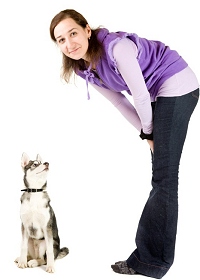
This young lady has learned my secrets for teaching her puppy to be attentive and to respect her.
Introduction: True or false... all a dog needs is love?
Chapter 1: Is your dog rude?
Chapter 2: My Three R's for canine education – Rules, Routines, and Respect
Chapter 3: How to reward your dog when he does something you like ("Good" or "Yes")
Chapter 4: How to correct your dog when he does something you don't like ("No" or "AH-ah!")
Chapter 5: Seven mistakes to avoid when teaching "No"
Chapter 6: Calmness indoors is essential
Chapter 7: Introducing your dog to a leash
Chapter 8: Teach your dog to walk politely on a leash ("Let's go")
Chapter 9: Teach your dog to stay quietly in a crate or pen ("Go crate" or "Go pen")
Chapter 10: Teach your dog to look at you when you say his name
Chapter 11: Teach your dog to wait politely at doors and gates ("Wait")
Chapter 12: Teach your dog to stop barking ("Quiet")
Chapter 13: Take charge of the doorbell
Chapter 14: Stop jumping on people
Chapter 15: Teach your dog to go to his bed ("Go to your bed")
Chapter 16: Stop over-dependency and "demanding" behaviors ("Enough")
Chapter 17: Teach your dog to come when called ("Come")
Chapter 18: Teach your dog to leave something alone ("Leave it" and "Don't touch")
Chapter 19: Teach your dog to accept touching/handling of every part of his body ("Stand", "Open your mouth", "Paw", "Bath")
Chapter 20: Teach your dog to sit, and to stay sitting ("Sit" and "Stay")
Chapter 21: Go for a structured walk
Chapter 22: Teach your dog to take things gently from your hand ("Easy")
Chapter 23: Teach your dog a great mealtime routine ("Hungry? Want supper?")
Chapter 24: Take charge of where your dog naps and sleeps ("Off")
Chapter 25: Take charge of your dog's toys
Chapter 26: Teach your dog to open his mouth and let go when you need to take something from him ("Give" and "Drop")
Chapter 27: Teach your dog to play a (controlled) Tug game ("Tug" or "Bite")
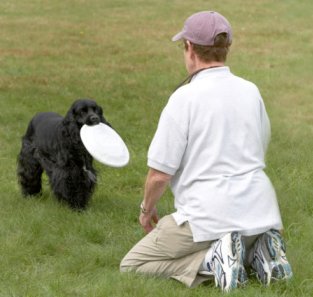
Fetch is a fun game to play, and great exercise. Using the methods in my book, many dogs can be taught to fetch a ball, stuffed toy, or frisbee.
Chapter 28: Teach your dog to play fetch (retrieving) ("Fetch" and "Get it" and "Bring it here")
Chapter 29: Teach your dog to find and fetch a specific toy (Names of toys, then "Find [specific toy]")
Chapter 30: Teach your dog to play hide and seek (Names of family members, then "Where's [family member]" and "Find [family member]")
Chapter 31: Teach your dog to GO wherever you send him ("Go couch", "Go chair" , "Go stairs", "Go car", etc.)
Chapter 32: Teach your dog 15 tricks ("Speak", "Play dead", "Wave" etc.)
Chapter 33: Teach your dog to lie down and to STAY lying down even when you walk away. ("Lie down")
Chapter 34: Teach your dog to drop immediately to the ground when he's running or playing in the distance (Emergency hand signal)
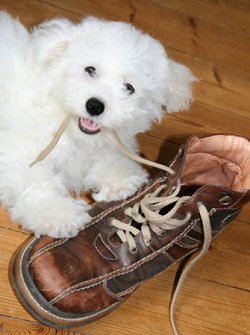
Oh, yes, he's cute! But boots are expensive, shoelaces can strangle his intestines, and a puppy who is destroying your belongings is learning to be DISrespectful. I'll show you how to channel your cute little guy's playfulness into good manners.
Chapter 35: Fun on the obstacle course ("Jump", "Tunnel", "Chute", "Walk it", "Climb it" etc.)
Chapter 36: Teach your dog to move out of your way ("Move" or "Shoo")
Chapter 37: Teach your dog to heel (formal walking) ("Heel")
Chapter 38: Teach your dog to find his way home ("Go home")
Chapter 36: Housebreaking – basics
Chapter 37: Housebreaking – go to the bathroom outdoors
Chapter 38: Housebreaking – using a doggy door
Chapter 39: Housebreaking – indoor potty yard or litter box
Chapter 40: Housebreaking – cleaning up accidents
Chapter 41: Housebreaking – problems
Chapter 42: Housebreaking – when to give more freedom in the house
Chapter 43: Urinating when excited or nervous
Chapter 44: Marking – leg-lifting against objects
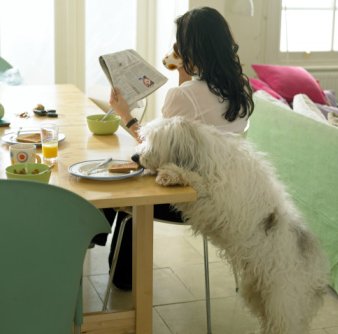
Quick.... someone send her a copy of my book. Follow my respect training progam and your dog won't take things behind your back!
Chapter 45: Interact politely with (or ignore) strangers and other dogs ("People")
Chapter 46: Unwarranted aggression is totally unacceptable
Chapter 47: Interact politely with (or ignore) any children/grandchildren in the family
Chapter 48: Be respectful of other dogs in the family – no bickering, pestering, pushiness, or jealousy
Chapter 49: Be respectful of any cats in the family ("Kitty")
Chapter 50: Miscellaneous words (Names of other animals such as "Squirrel"; Names of other pets)
Chapter 51: Learn about your dog's breed
Chapter 52: Off-leash control
Chapter 53: Summary of rules, routines, consequences, and leadership in daily living
Chapter 54: Was your rescue dog abused?
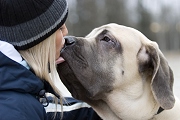
"A 1000% improvement in his attitude"
"I love my dog Junie, but he was impossible to live with, what with the "accidents" on the floor, chewing the table legs, etc. I was just days away from giving up on him. Now I've seen a 1000% improvement in his attitude toward me. He is his same lovable self but paying attention to me now." – Andi Sheets
"Anyone can follow this program, no experience needed"
"I am completely blown away by your vocabulary and respect program. You've pulled everything together into one solid package of sensible dog training. Anyone can follow this program, no experience needed, and end up with a much better dog."– Andrew Rigatto


